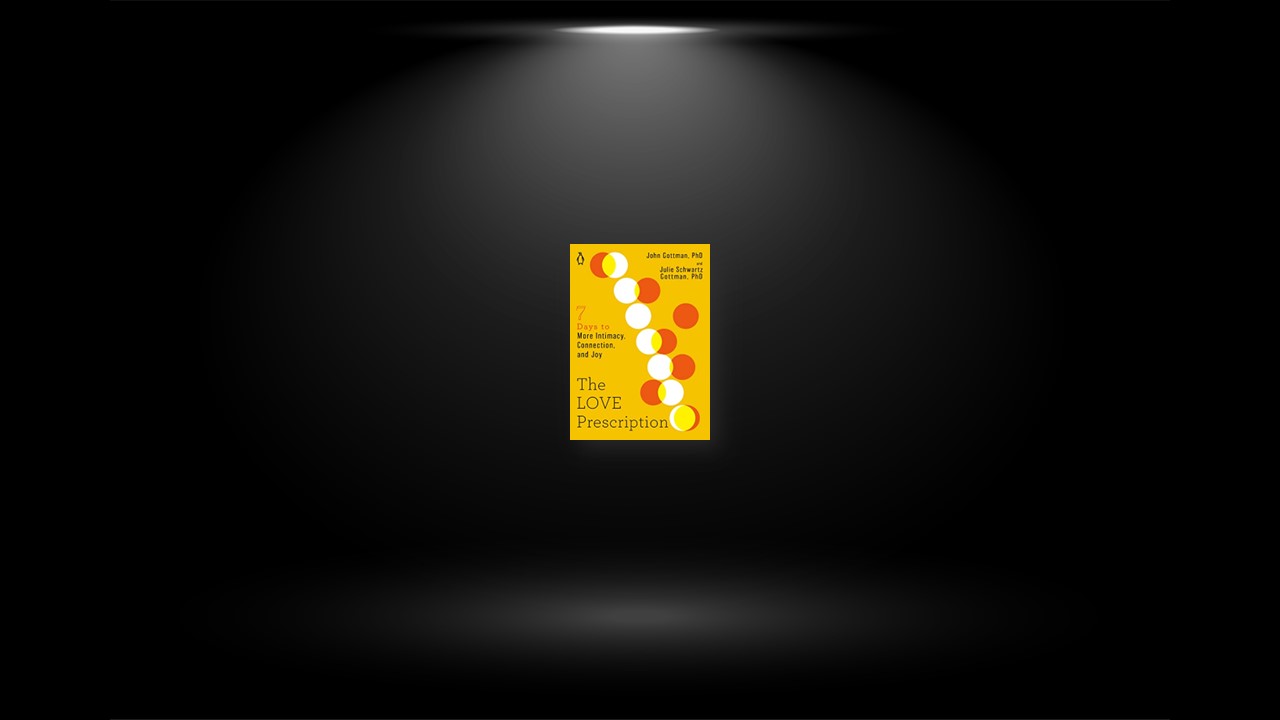Day 1: Make Contact
Focusing only on conflict was the wrong way to go about things. First, we have to work on friendship. That’s hard to do, because if you are in conflict, you may have a strong desire to “fix” it. But when we gravitate back to our conflicts first, we can make things worse. Why? Because as tensions rise, our bodies can respond physiologically; we can get overwhelmed and default to our old habitual ways of coping.
THE TEN-MINUTE CHECK-IN
This is great to do at the beginning of the day, but you can do this at any time that works for you. The rules are simple—pick a time to check in with your partner when you have ten minutes to listen and not rush off anywhere. It can be in the morning, over coffee and before you start work, or in the evening after you’ve put the kids to bed. Ask them this simple question:
Is There Anything You Need from Me Today?
How does this create “turning toward”? First, it allows your partner to reflect on their own needs for a moment. Second, it makes clear that you really want to be there for them today if you can. And third, it gives hope that if they state what they need, you’ll try to respond affirmatively.
It’s just one sentence. But it does a lot. It’s an invitation. It says I love you and I want to be there for you. It’s a great trust builder. Trust, in a relationship, is a biggie. It’s a complicated thing—but the foundations of it are basic. The principle behind trust is, “I’ve got your back, and you’ve got mine.”
So when your partner responds to this question today, do everything in your power to say yes, and make it happen, whether it’s “I need a break from the kids” or “I’d love to have lunch with you.”
Day 2: Ask a Big Question
Today’s assignment: Ask your partner one big question and see where it goes. A big question is an open-ended question; there’s no dead end of a yes/no answer available. There is no one right answer—there are many—and your job as topographer is to follow your partner in whatever direction they go.
A big question doesn’t have to be serious or momentous or tackle the meaning of life—although it can! Consider these: What are some unfulfilled things in your life? What legacy do you want our kids to take from your family? How have you changed in the past year? What are some of your life dreams right now?
A big question can also be fun, light, silly: If you could change into any animal for twenty-four hours, which one would you choose and why? If you could design the perfect house for us, what would it look like? If you could wake up tomorrow with three new skills, what would you pick?
Use one of these, or come up with one of your own. Just make it open-ended, and make it something fun to think about and discuss. You don’t need to delve into your toughest topics or points of conflict today. You’ll be surprised at where some of these questions will take you.
Encourage your partner to say more. Make exploratory statements. Express interest and curiosity. You don’t have to have a response to everything, and you don’t have to solve their problems. In fact, try to resist problem-solving. That’s a different kind of conversation and isn’t the goal today. Making love maps is about listening, learning something new about the person you love, being surprised. If you feel the instinct to jump into problem-solving mode, or rebut something they’re saying, just mentally set it aside. Tell yourself: Not now—you can talk about that later.
Day 3: Say Thank You
Saying thank you is one of the first things we’re taught as children—to show appreciation and gratitude when someone does something kind, or goes out of their way, for us. You probably say it automatically, almost without thinking, all day long: to your work colleagues, the bagger at the supermarket, the stranger who holds the door for you. But in our most intimate relationships, we can forget how important saying thank you really is.
Our partners want to know that they’ve pleased us. That their efforts—however imperfect they can sometimes be—are still seen and appreciated. That they aren’t taken for granted or invisible.
Step One: Be an anthropologist.
For the rest of the day (or tomorrow, if you’re reading this at night), your job is to be a spy. Forget your to-do list. Take a few hours off work. (Or call in sick—we’ll sign the doctor’s note!) If that’s not possible, carve out whatever time you can to be around your partner as they’re going about their day. To train your mind to do this, you need to—for a short time anyway—eliminate all other distractions, and just watch.
Step Two: Say thank you.
Say thank you for something routine. If you’ve been observing your partner closely, you’ll have a lot of opportunities to do so. Thank them for something they’re doing right, even if it’s small, even if they do it every day—in fact, especially if it’s small and they do it every day! But don’t just say “Hey, thanks.” Tell them why this small thing is a big deal to you. “Thank you for making the coffee every morning. I love waking up to the smell of coffee and the sounds of you puttering away in the kitchen. It just makes me start the day off right.”
Day 4: Give a Real Compliment
Today’s action is essential whether you have a thriving culture of admiration between you and your partner or whether your relationship needs some serious rehabilitation. If this is an area of strength for you, wonderful. Let’s keep that fire well fed.
For some couples (and if this includes you, you aren’t alone), fondness and admiration seem like distant memories. That doesn’t mean they aren’t still there, waiting to be called back to life. Reviving admiration is not complicated. You fell in love with this person and committed yourself to them; you come to these pages with a desire for that love to go on. You have positive feelings in there. Thinking about them and talking about them will bring them back to life more quickly and vividly than you might imagine. A plant that is wilting away often needs just a splash of water to leap back up toward the sun. A little bit goes a long way. Today’s exercise has three parts:
Step One: If you were to paint a verbal portrait of your partner in words, which words would you choose? Circle three to five choices:
Warm / Funny / Generous / Calm / Creative / Passionate / Intense / Vivacious / Thoughtful / Spontaneous / Adventurous / Fun-loving Step Two: Today, anytime you are together, notice the ways your partner embodies those qualities you circled above. As you did yesterday, closely observe your partner when you’re with them. Notice when they are demonstrating those qualities you love and appreciate. And then . . .
Step Three: Express it! How often do you communicate to your partner the core, essential things you love and appreciate about them? Do it more, because every time counts!
Day 5: Ask for What You Need
We all need to learn how to say what we want and need. It can feel uncomfortable or wobbly at first, but it’s like riding a bike—once you get started, you’ll quickly get the hang of it. Today, your practice has three steps.
Step One: Reflect. What do you need or want? Take a moment, right now, and think about what you’ve been wanting from your partner. Are you longing to spend more time with them? Do you need help with housework? Do you need to feel more supported in pursuing your career? Do you need to hear “I love you” more often?
Step Two: Reframe. If you are thinking in the negative perspective, flip it. Don’t point out what’s wrong. Offer an opportunity. What is the positive need you would like them to fulfill?
Step Three: Describe yourself. Always ask for what you need by talking about how you feel and what you need. “I miss you. Can we hang out tonight, no phones and no TV?” “I am absolutely swamped this week. Could you take something off my plate?” “I’m feeling so tired today. Would you do bedtime with the kids tonight so I can rest for a few minutes? Then let’s sit and have a glass of wine.” “I love being held by you. Give me a hug?”
Know what you need, say what you need, and you’ll very likely get what you need! Your partner wants to be there for you—so let them. Make it easy! A common phrase comes to mind that people will often say with a whiff of sarcasm when someone doesn’t guess exactly what they want: “Do I need to draw you a map?”
We say: Yes! Draw them a map. You’ll both be happier for it.
Day 6: Reach Out and Touch
THE MAGIC OF MINI-TOUCH
To get that healing dose of oxytocin, you need to put the time in. But even little bits of time add up. A moment here, a moment there—they make a difference. They aggregate and build exponentially, strengthening your emotional and physical connection. So today’s assignment is to create as many moments of physical connection as possible. This doesn’t have to be about sex—just sitting together on the couch, holding hands, or stopping for a hug will all establish and nourish your physical connection and emotional closeness. What you do is up to you, and any amount is good. The more the better! But do talk about it with your partner and make sure you’re both on board. This should be natural, comfortable, and fun. As long as everyone’s all-in, then go for the whole list!
Kissing activates five out of twelve cranial nerves, and that’s very good! And a twenty-second hug releases oxytocin into your bloodstream. Your blood vessels dilate. Your brain receives more oxygen. The physical effects are real. So go get that love hormone: it’s good for your brain, your body, and your relationship.
Check as many as you’d like! Kiss . . . for six seconds. Hug. . . . for twenty seconds. Hold hands . . . for as long as you like. Trade a ten-minute massage (one person sits on the couch, the other on the floor in front of them . . . then swap). Cuddle on the couch. Put an arm around your partner. Touch each other’s hand or arm while you’re talking. Put a hand on your partner’s shoulder if they’re stressed. Touch foreheads. Touch feet under the table.
Day 7: Declare a Date Night
Today, invite your partner on a spur of the moment mini-date. A “date” doesn’t have to mean a fancy dinner and a babysitter. It can happen in the backyard in the rain. It can happen on your porch.
The Ground Rules for Date Night
No screens! No phones. No Netflix. This is real-life, human face time. Don’t drink too much! Bonding over a glass or two of wine is just fine. But don’t imbibe to the point where you’re not yourself anymore. Make sure you’re both on board with the plan! This is a joint endeavor. Everyone should be into it.
Don’t assume it’s going to end in sex. Too much pressure. If one person needs to vent and talk about what’s stressing them out, be open to that. Tonight does not have to be perfect or go in any particular way. There will be other date nights. (Like next week, since you’re making this a habit, right?)
Don’t make it a social engagement. Just the two of you!


